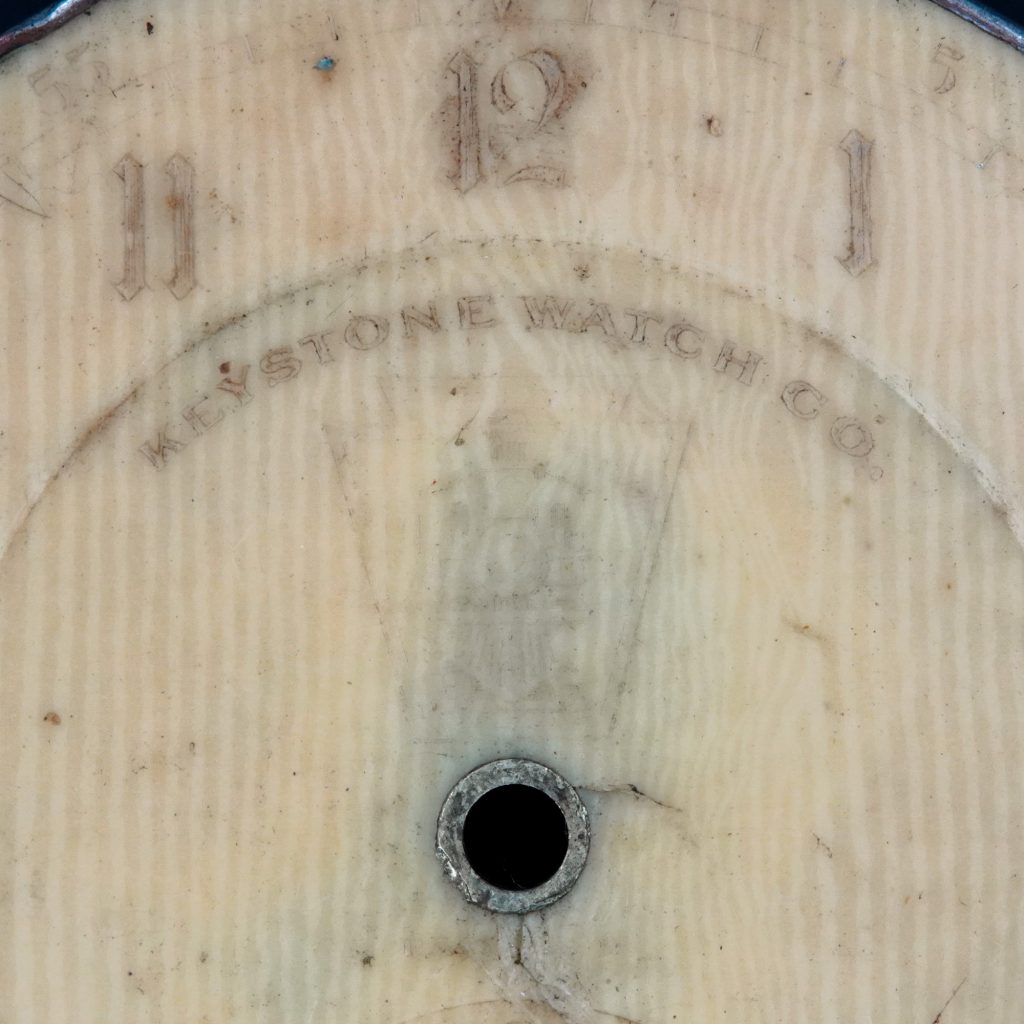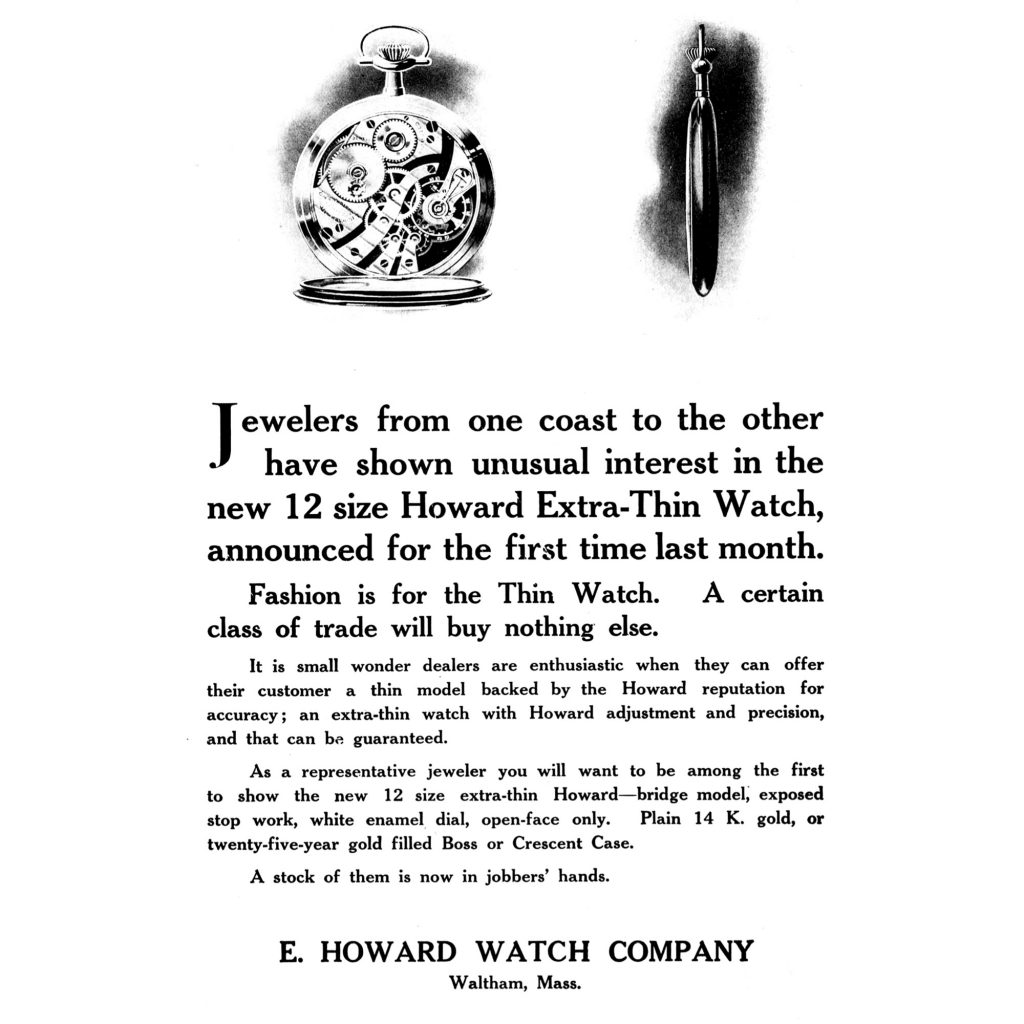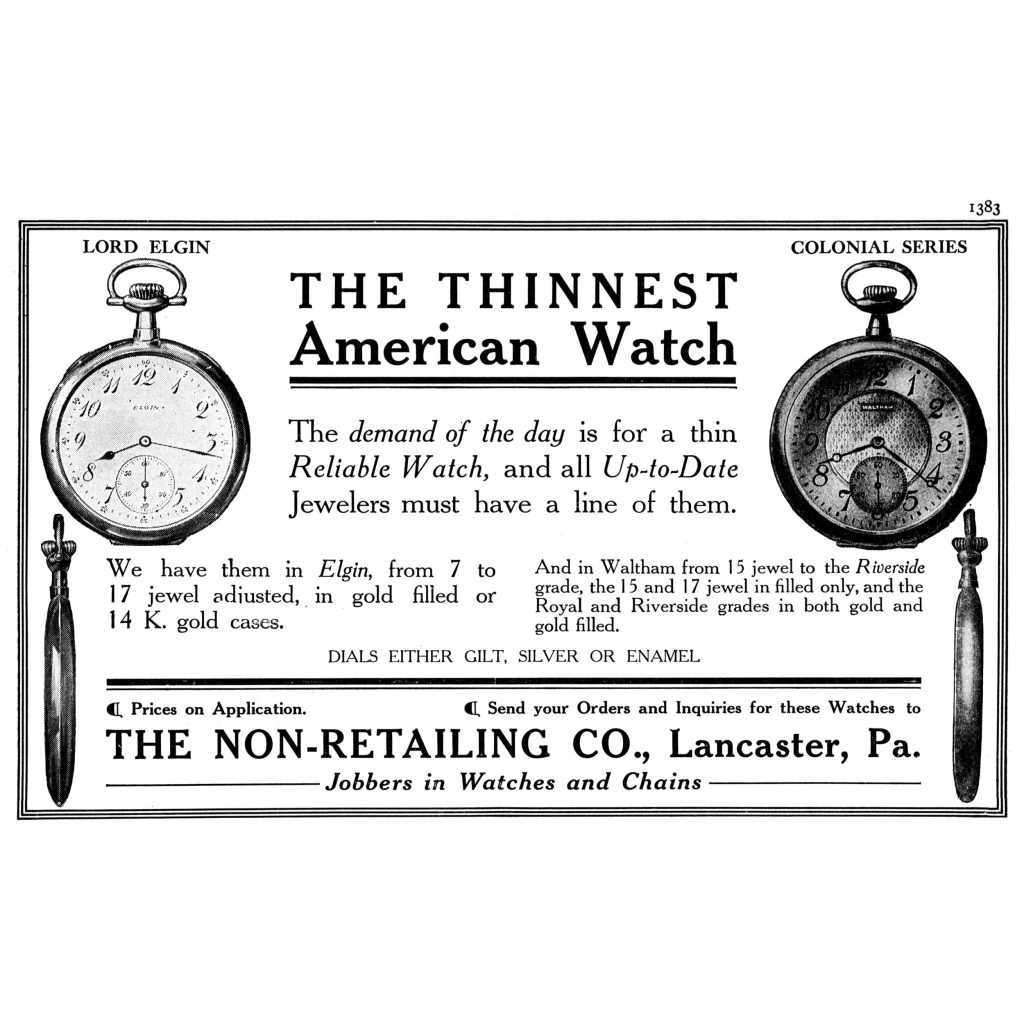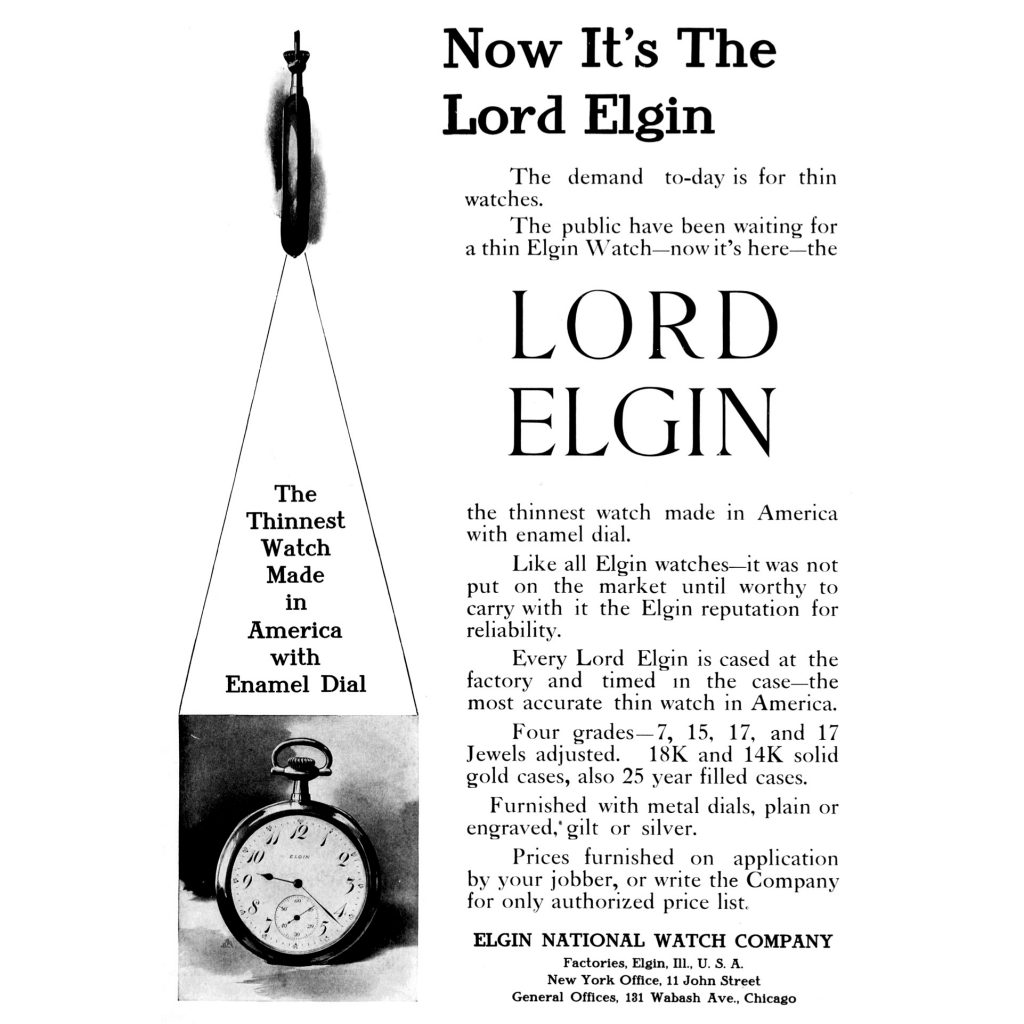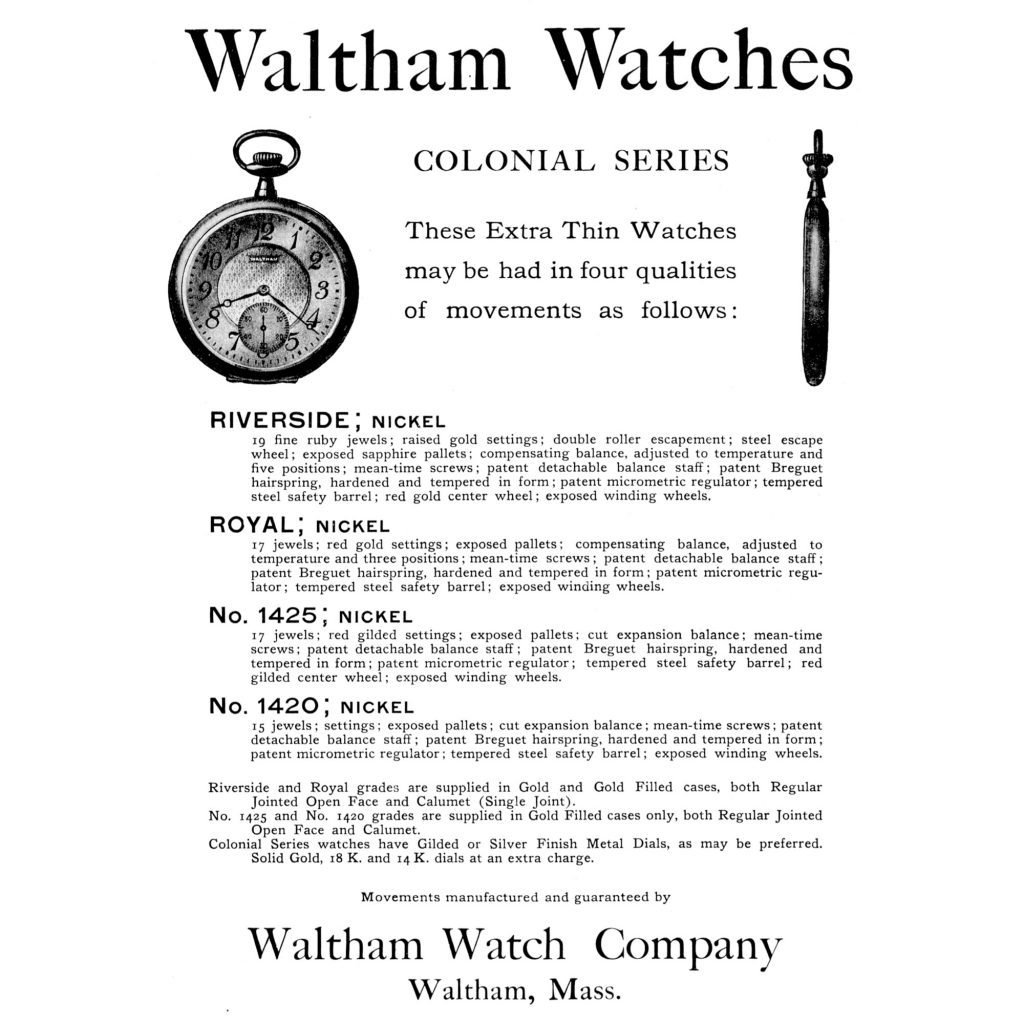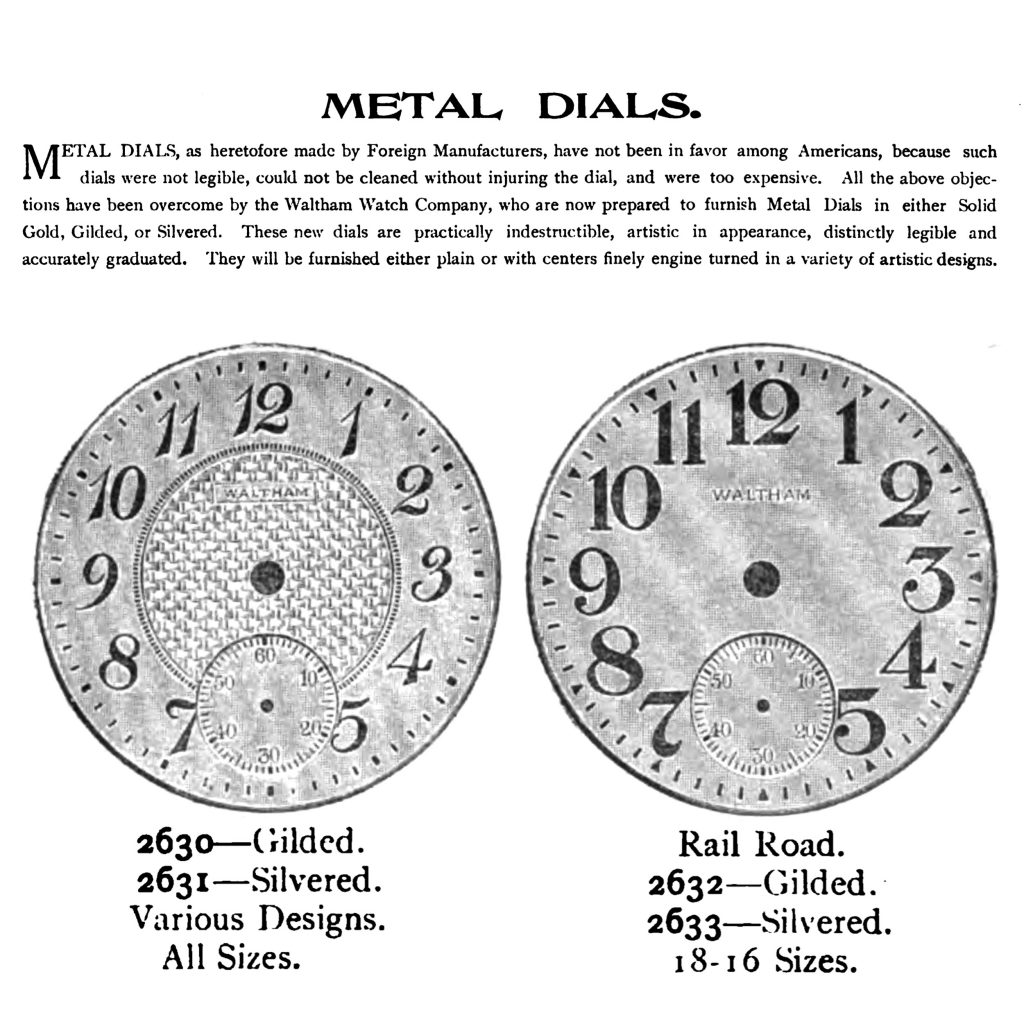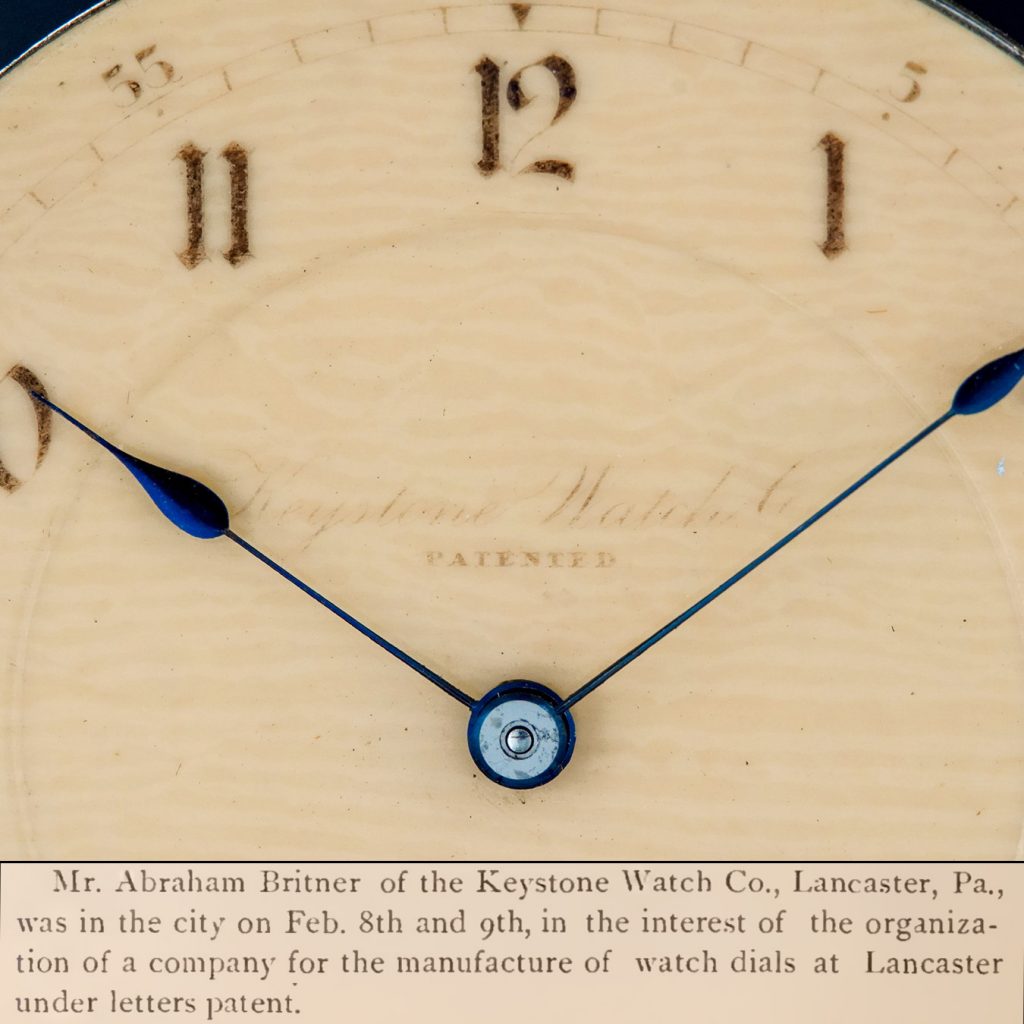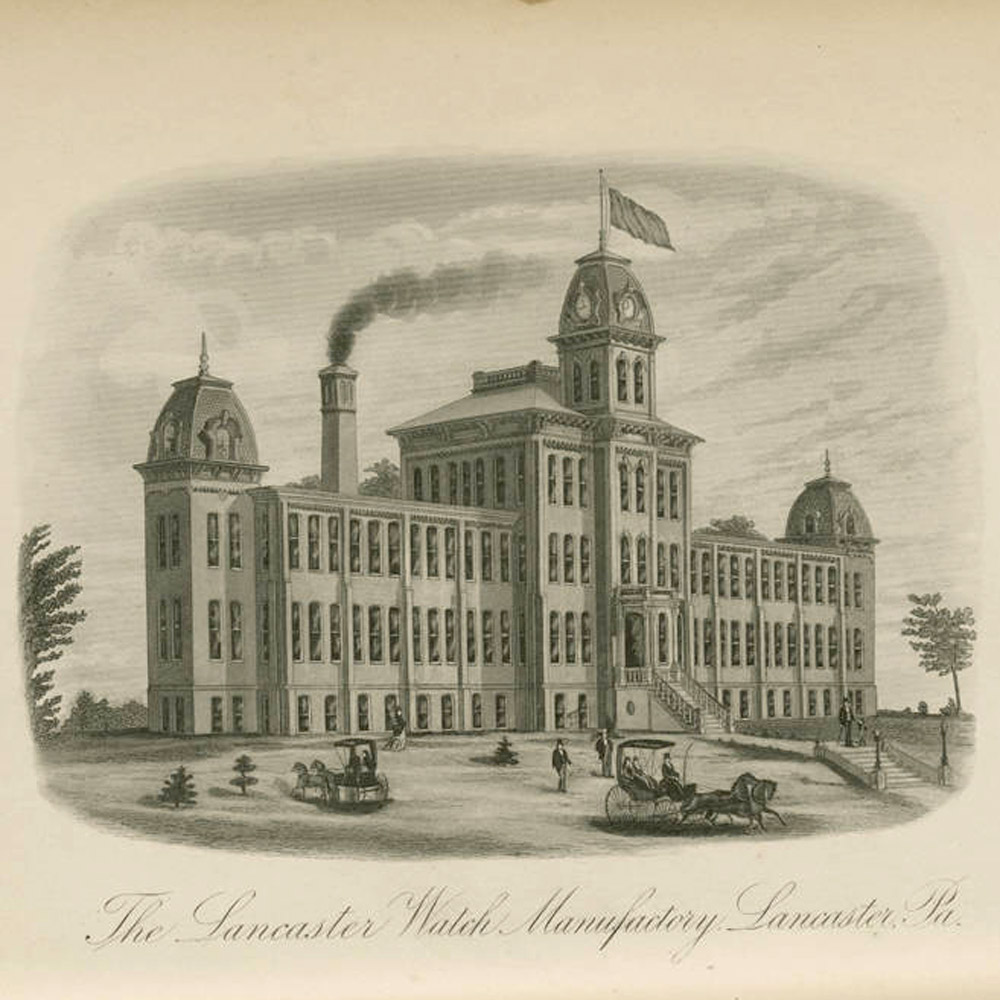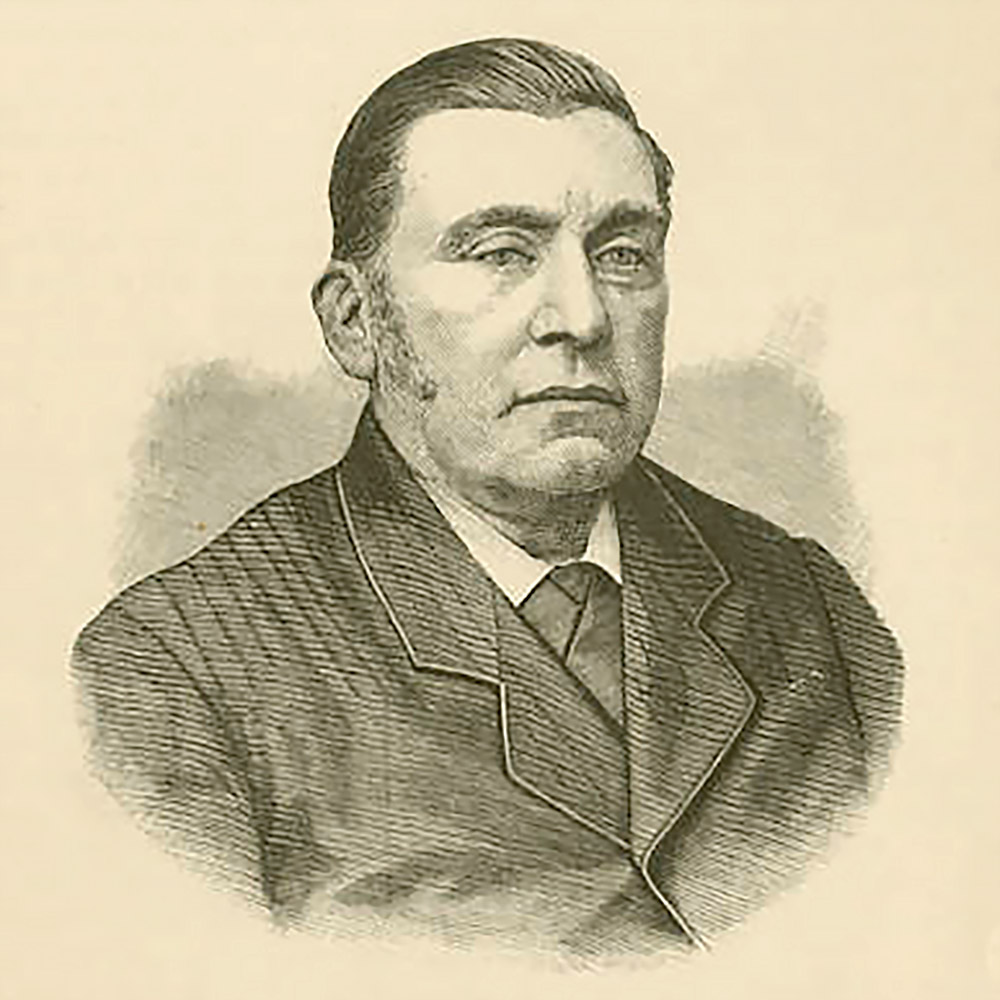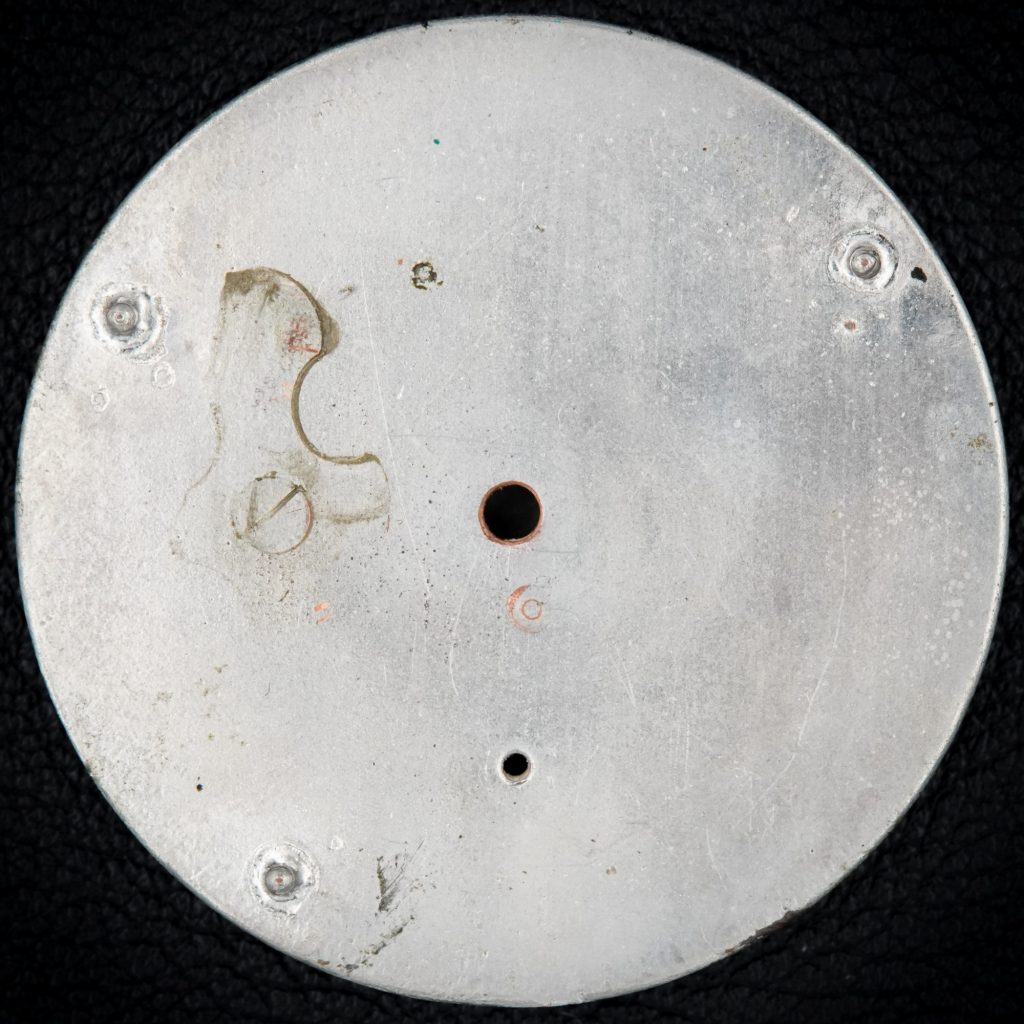Author: Nathan Moore
Pictured: “The Thinnest American Watch” Advertisement by The Non-Retailing Company, Published in the September 1908 Issue of The Keystone By the end of 1908, the demand for extra thin watches.
Pictured: Elgin “Lord Elgin” Series Advertisement, Published in the June 1908 Issue of The Keystone Shortly after Waltham launched their “Colonial Series” watches in 1907, the Elgin National Watch Company.
Pictured: Excerpt from the 1909 Waltham Material Catalog Highlighting Metal Dial Options During the 1890s, fancy enamel dials were the fashionable trend in the watch market. After the turn of.
Pictured: Patent Celluloid Watch Dial from the Keystone Watch Company with excerpt from the March 1888 issue of The Jewelers’ Circular and Horological Review. In February 1888, while Abraham Bitner.
Pictured: Abraham Bitner, Published in History of Lancaster County, Pennsylvania by Ellis and Evans, 1883 From an early age, Abraham Bitner was involved in many business ventures around Lancaster, Pennsylvania,.
Pictured: Flat Metal Reverse of Celluloid Watch Dial from the Keystone Watch Company One of the primary claims of distinction in Abraham Bitner’s 1881 patent application for his paper dial.
